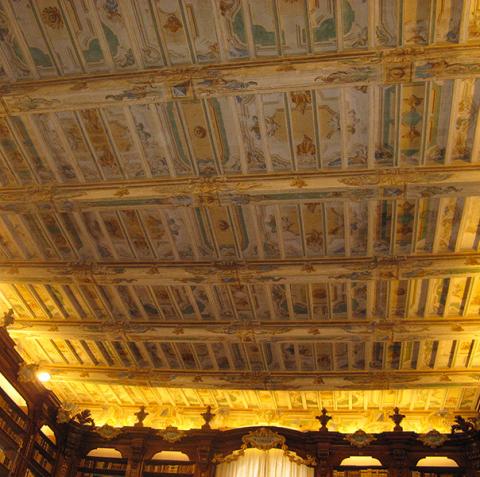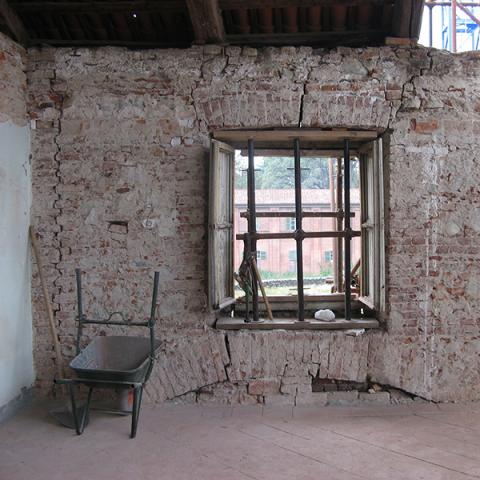stefano.agnetti_2021
Stefano Agnetti
RECUPERARE E RINFORZARE LE ANTICHE STRUTTURE LIGNEE
Antichi tetti e solai in legno rappresentano una delle peculiarità architettoniche più belle dell’edilizia storica, meritando, quando possibile, un restauro strutturale che ne possa preservare la continuità di esercizio e l’adeguamento alle nuove destinazioni d’uso. Il problema principale delle strutture lignee risiede nella marciscenza e degrado materico, dovuto all’umidità, infiltrazioni e all’attacco di organismi vegetali, e nelle eccessive deformazioni che possono accumulare nel corso dei secoli.
RECOVER AND STRENGTHEN OF ANCIENT WOODEN STRUCTURES
Ancient wooden roofs and floors represent one of the most beautiful architectural features of historic buildings, deserving, when possible, a structural restoration that can preserve the continuity of conservation and adaptation to new destinations of use. The main problem of wooden structures lies in the rotting and degradation of the material, due to humidity, infiltration and the attack of plant organisms, and in the excessive deformations that can accumulate over the centuries.
Wood weighs about 5 times less than concrete, but has an almost identical compressive strength and good tensile strength. In the seismic field, the wooden structures are lighter and therefore involve less seismic masses that contribute to limiting the dynamic stresses that subject the building, with benefits in terms of seismic resistance.

Archi e volte
L’edilizia storica, dai palazzi alle chiese, è caratterizzata dalla presenza di archi e volte quale soluzione architettonica originariamente ricorrente fin dal passato per coprire grandi e piccole luci. Il quadro fessurativo è sempre associato alle spinte non sufficientemente contrastate e a valori di trazione eccessivi in corrispondenza dell’innesco di cerniere plastiche. La vulnerabilità degli archi e delle volte deve essere attentamente analizzata anche per le sollecitazioni dinamiche derivanti dal terremoto. Le azioni sismiche possono infatti mettere in grave rischio la loro stabilità, legata prevalentemente ad un equilibrio stabilizzante di tipo statico.
ARCHES AND VAULTS
The historical building s, from palaces to churches, is are characterized by the presence of arches and vaults as an architectural solution originally recurrent from the past to cover large and small distances. The crack pattern is always associated with insufficiently contrasted thrusts and excessive traction tensile stress values in correspondence with the triggering of plastic hinges. The vulnerability of the arches and the vaults must be carefully analyzed also for the dynamic stresses deriving from the earthquake. The seismic actions can in fact put their stability in serious risk, mainly linked to a stabilizing equilibrium of a static type.
About the vaults it is possible to speak of a clear division between traditional strengthening techniques, mainly related to the use of tie rods to counteract the lateral thrustspushes and to the application of extradosal steel reinforced concrete castings jacketing, and the more recent and different ones based on the use of composite materials very light applied by simple bonding. Sections of the D.P.C.M. 9 February 2011 "Assessment and reduction of seismic risk of cultural heritage with reference to the technical standards for buildings referred to in the ministerial decree of 14 January 2008" will be descripted to give a brief overview of the possibilities offered by reinforcement techniques.

Cucire e rinforzare le pareti lesionate
Il ripristino della continuità muraria e il miglioramento delle prestazioni meccaniche delle pareti costituiscono la parte fondamentale del consolidamento strutturale e del miglioramento sismico di un edificio storico in muratura. Ogni quadro fessurativo, oltre alle problematiche statiche che può implicare sulla stabilità dell’edificio, può rappresentare anche un punto di vulnerabilità sismica favorendo un potenziale cinematismo fuori dal piano della parete. Per questo è importante cucire in modo efficace le lesioni, non limitandosi alla sola risarcitura o stuccatura. Diverse tecniche di rinforzo, che interessano l’intera superficie muraria, potranno migliorare le resistenze meccaniche, in particolare quella a taglio che risulta spesso fondamentale nelle verifiche normative. Saranno illustrate diverse tecniche di intervento, confrontando le tradizionali con quelle più moderne realizzate con i materiali compositi, seguendo la classificazione e i suggerimenti offerti dal D.P.C.M. 9 febbraio 2011.
How to sew and reinforce damaged masonry walls
The restoration of the structural continuity and the improvement of the mechanical performance of the masonry structures are the fundamental part of the strengthening and seismic improvement work of a historic masonry building. Each crack pattern, in addition to the static problems that may imply on the stability of the building, can also represents a seismic vulnerability, promoting a potential kinematic out of plane mechanism of the wall. For this reason it is important to sew the cracks effectively, not limiting itself to just grouting. Different strengthening techniques, which affect the entire surface of the walls, can improve the mechanical strength, in particular the shear strength which is often fundamental in checks of technical codes. Different strengthening techniques will be illustrated about the masonry walls, comparing the traditional ones with the more modern ones made with composite materials, following the classification and the suggestions offered by the D.P.C.M. 9 February 2011.

